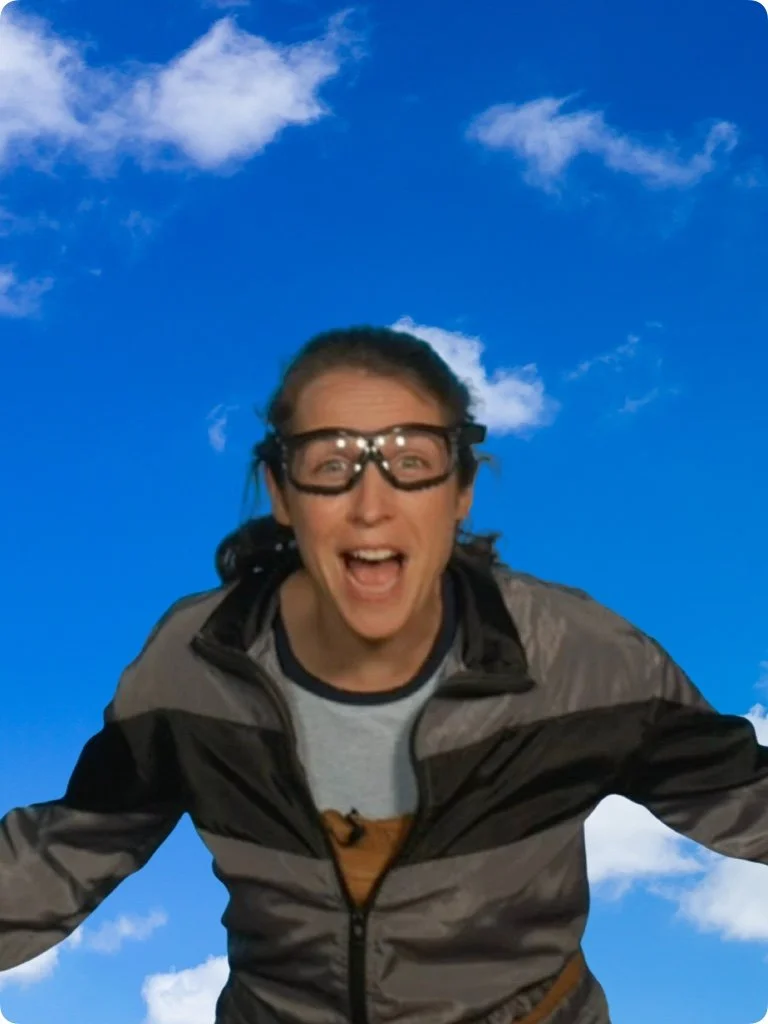Ask Tappity: Science Questions for Kids > Why Is the Sky Blue?
Why Is the Sky Blue?
This is the oldest of kid questions, but that doesn’t make it easy to answer. Why exactly IS the sky blue? Watch this video to find out, or read our explanation below!
Why Does Anything Have Color?
Light from the sun is white - a mixture of all the colors, which your brain interprets as white. If you look at a green leaf, what you’re really seeing is just the green light being reflected from the leaf into your eye. The rest of the colors of light were absorbed by the leaf. When you’re seeing a color, what you’re seeing is that color light being reflected by the thing you’re looking at.
The Sky Bounces Around Blue Light
The sky has tiny gas particles in it - the atmosphere, or as we like to call it, air. These tiny particles just happen to be the perfect size to let every color of light pass straight through, except blue. Blue light hits the air molecules and gets bounced all around, ping-ponging from one molecule to the next and scattering across the sky. So while the rest of the light from the sun travels straight to you in a straight path, some of the blue light gets bounced all around the sky before it gets to you. This is called Rayleigh Scattering.
Blue Milk = Blue Sky
You can see almost the exact same thing happen if you shine a flashlight through water mixed with milk (everyone’s favorite holiday activity). Most of the light passes through, but the blue light gets bounced around by the milk. That blue light eventually reaches your eyes when you look at the milk, while the rest of the light made it through - and if you look, that light will be a little more reddish, because the blue light has been taken out. That’s also why the sun appears yellow - even though it's actually white!
Sky Facts For Kids
Got sky questions? We’ve got sky answers!
-
At sunset, the sun is traveling through the atmosphere from an angle - from near the horizon. If you think about it, this means the light is traveling through even more air than it normally does before it reaches you. By the time it gets to the part of the atmosphere you can see, most of the blue light has already been scattered away. Some of the reddish light still gets scattered by the atmosphere, which is why the sky appears reddish-orange.
-
Nope! Even on an overcast day, the ocean is still blue. It’s blue because the rest of the colors of light get absorbed by water, and dark blue light is reflected more easily.
-
Technically, the sky is really more of a bluish-violet. Violet light gets scattered even more than blue light does. But our eyes are a lot worse at perceiving violet light, so we don’t really see it.
-
The Moon reflects white light from the Sun down to Earth - so why doesn’t it also turn the sky blue? Well, it actually does - just not nearly enough for us to be able to see it. It’s so little light, that the sky just appears transparent, letting the brighter light from faraway stars through.
-
Color isn’t an inherent property of something - it’s our interpretation of the light that is being reflected off of it. If you shine blue light on a piece of paper, it will appear blue. The sky is blue when white light shines through it from directly overhead, reddish when white light is shined through it from the side, and clear when no light is being shined through it.
More Answers to Weather Questions from Kids
Why do hurricanes spin? What is lightning? The Tappity Meteorologist library has interactive lessons with answers to those questions and more!
Want Even More Science for Kids?
Dive into Tappity, the world’s largest interactive K-5 science library. Find everything from penguins to planets and even protozoa! So whether you’re an early engineer, a budding biologist, or an aspiring astronaut, you'll be sure to discover something new just for you.




















